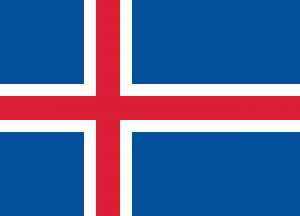Difference between revisions of "Language/Icelandic/Grammar/Negation"
m (Quick edit) |
m (Quick edit) |
||
| Line 101: | Line 101: | ||
{{Icelandic-Page-Bottom}} | {{Icelandic-Page-Bottom}} | ||
<span links></span> | <span links></span> | ||
{{Icelandic-0-to-A1-Course-TOC}} | |||
[[Category:Course]] | |||
[[Category:Icelandic-Course]] | |||
[[Category:0-to-A1-Course]] | |||
[[Category:Icelandic-0-to-A1-Course]] | |||
Revision as of 15:48, 29 March 2023
Hi Icelandic learners! 😊
In this lesson, we will be exploring one of the most important aspects of the Icelandic language - negation. As an intermediate learner, mastering negation is crucial to your understanding and communication of the language. You will also learn interesting cultural facts and analogies as we go along. So, grab your learning materials and let's get started!
Take a moment to explore these relevant pages as you conclude this lesson: Possession & Adverbs.
Basic Negation
The most common way to negate a sentence in Icelandic is to use the word 'ekki', which means 'not'. For example, the sentence:
Ég tala íslensku. (I speak Icelandic.)
Can be negated by adding 'ekki' before the verb:
Ég tala ekki íslensku. (I don't speak Icelandic.)
It is important to note that 'ekki' is often placed directly before the verb it negates. However, it can also be used in combination with other words to make a negative sentence.
Hann er ekki heima. (He is not at home.)
Hún álítur sig ekki vera listamann. (She doesn't consider herself an artist.)
The Icelandic Double Negative
Unlike in other languages, double negatives are common and accepted in Icelandic. In fact, they are often used to express a stronger negation.
For example:
Ég hef aldrei ekki haft tíma. (I have never not had time.)
In English, this sentence would technically be a double negative and considered poor grammar. However, in Icelandic, it conveys a stronger sense of never having any time.
Negation of Nouns and Adjectives
In Icelandic, nouns and adjectives can also be negated by adding the prefix 'ó'.
For example:
Hús (House) -> Óhús (Non-house/Not a house)
Fallegur (Beautiful) -> Ófallegur (Ugly/Not beautiful)
Dialogue
- Person 1: Ég datt í gatuna.
(I fell in the street.)
- Person 2: Er ekkert í lagi?
(Are you okay?)
- Person 1: Nei, ég er ekki í lagi.
(No, I'm not okay.)
- Person 2: Ó nei, hvað gerðist?
(Oh no, what happened?)
Exceptions to Negation
While 'ekki' is the most common way to negate a sentence in Icelandic, there are some exceptions where 'ekki' cannot be used. For example, when using certain prepositions such as 'án' (without) or 'nema' (except):
Án manns er enginn. (Without a man, there is no one.)
Nema þú. (Except for you.)
In these cases, negation is formed by using the particle 'eigi' instead of 'ekki'.
Advancing Negation
To further advance your understanding of negation in Icelandic, it is important to learn about more complex grammatical structures that are commonly used. These include the use of reflexive pronouns, genitive constructions, and prepositional phrases.
To improve your Icelandic Grammar, you can also use the Polyglot Club website. Find native speakers and ask them any questions!
Sources
➡ If you have any questions, please ask them in the comments section below.
➡ Feel free to edit this wiki page if you think it can be improved. 😎
Other Lessons
- Definite Article
- Gender
- Pronouns
- Adverbs
- Nouns
- How to Use Have
- Prepostitions
- Plurals
- Questions
- Icelandic Articles
